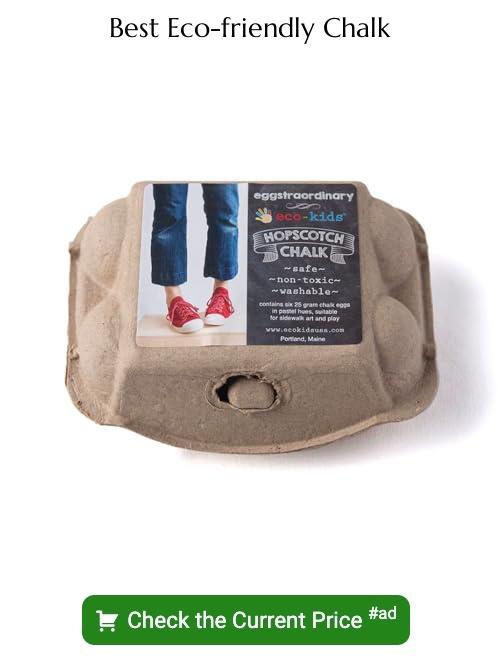Last updated on
Chalk is not considered significantly detrimental to the environment as it is mostly made of natural calcium carbonate, which is biodegradable and non-toxic.
Key takeaways:
- Chalk is biodegradable and non-toxic to the environment.
- Rock climbing chalk can have negative effects on natural landscapes.
- Chalk mining disrupts habitats and contributes to pollution.
- Powdered chalk can alter rock formations and impact biodiversity.
- Eco-friendly chalk options and responsible use can lessen environmental impact.
The Surprising Environmental Effects of Rock Climbing Chalk
Rock climbing chalk, primarily composed of magnesium carbonate, is essential for climbers seeking a good grip on rocky surfaces.
However, the popular use of this tool has unforeseen consequences for our natural landscapes.
Climbing chalk does not biodegrade, meaning it can remain on rock surfaces indefinitely.
This persistent residue alters the appearance of cliffs and can affect rock-dwelling organisms.
Magnesium carbonate can change the pH of soil upon accumulation, potentially affecting local plant life that relies on specific soil conditions.
Additionally, the increase in particulate matter from chalk can impact air quality, especially in popular climbing areas where frequent use accumulates.
Considering these points, climbers are encouraged to be mindful of their chalk usage, to keep the climbing environment pristine for future generations.
How Is Chalk Mined?
Chalk mining begins with the identification of chalk deposits, typically found in areas that were once covered by sea water.
Excavation of this sedimentary rock proceeds through open-pit quarries, where layers of the earth are systematically removed to expose the chalk beds.
Environmental impact assessments are conducted to mitigate damage; these examine potential effects on water quality, air quality, and local biodiversity.
Removal of vegetation and topsoil disrupts the natural habitat, and machinery used in the process contributes to air and noise pollution.
The chalk is then crushed, and unwanted materials like flint are removed, which can generate waste.
The purified chalk is processed for various uses, such as climbing, classroom, and industrial purposes.
Mining regulations are put in place to ensure safe and responsible practices, aimed at minimizing the environmental footprint of the chalk industry.
How Does Powdered Chalk Negatively Impact Rock Formations?
Powdered chalk, commonly used by rock climbers for improved grip, can unexpectedly affect natural rock formations in several ways:
Alteration of Rock Coloration: The white residue from chalk may change the appearance of rocks, leaving unsightly marks that can disrupt the aesthetic of the environment.
Chemical Reactions: Chalk, primarily composed of magnesium carbonate, can interact with the native minerals in rock. Over time, these chemical interactions may cause physical changes to the rock’s surface.
Pore Clogging: Rocks are typically porous to some extent. Chalk dust can clog the pores and affect the rock’s ability to expel moisture, leading to increased erosion rates.
Impacting Rock Integrity: Repeated application and cleanup of powdered chalk can cause the rock surface to become smoother, potentially altering its structure and the integrity of natural holds.
Biological Impact: The introduction of foreign substances like chalk can impact the micro-ecosystems that exist on the rock surface, such as lichens and mosses, which play a crucial role in the environment.
Being mindful of these impacts, climbers and outdoor enthusiasts can make more informed decisions about the use of chalk in natural settings.
What Can We Do To Lessen Our Impact On The Environment?
Opting for eco-friendly chalk formulations is a significant first step, selecting products made with sustainable practices or those certified by environmental groups.
Refillable chalk balls offer a reduced-dust alternative to loose powder, limiting the amount left behind on rock faces.
Adhering to established climber paths and cleaning up any excess chalk can minimize the impact on natural landscapes.
Additionally, participating in or organizing clean-up events at popular climbing spots encourages community involvement in preserving climbing environments.
Supporting companies that actively engage in environmentally conscious initiatives can also guide industry standards towards more sustainable practices.
Are Blackboards More Environmentally Friendly Than Whiteboards?
When evaluating the environmental impact of blackboards versus whiteboards, it’s necessary to consider the materials and the substances used with each. Blackboards, crafted from natural slate or MDF coated with porcelain enamel, are durable and have a long lifespan. They are used with chalk, which, despite its potential for dust generation, is a naturally occurring material that does not leave permanent marks on ecosystems if managed correctly.
On the other hand, whiteboards are made from a plastic sheet or painted steel and require erasable markers. These markers contain volatile organic compounds (VOCs) that can release potentially harmful gases into the atmosphere. In addition, whiteboards may degrade faster than slate blackboards, leading to a shorter life and more frequent replacement, which can increase waste.
Recyclability is also a factor; slate can often be repurposed or easily absorbed back into the environment, whereas the synthetic materials of whiteboards may not break down as readily and could contribute to landfill volume. The production process for both boards may have environmental implications, but the long-lasting nature of blackboards may offer a slight edge when it comes to overall sustainability.
Recap:





